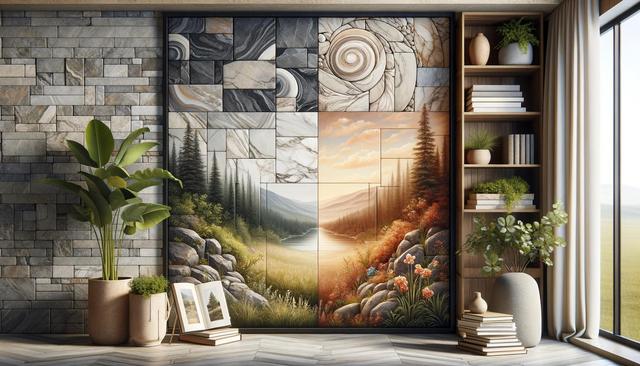What Are Faux Stone Panels?
Faux stone panels are decorative surface coverings that mimic the look and texture of natural stone. Made from high-density polyurethane, these panels are designed to replicate the appearance of materials like granite, slate, limestone, and river rock without the weight or cost. They come in a variety of textures and colors, making them suitable for a wide range of design preferences. Because they are lightweight and easy to install, faux stone panels have become popular for both DIY enthusiasts and professionals. Often used in place of real stone, they provide a durable and cost-effective alternative that doesn’t compromise on style.
One of the key benefits of faux stone is its versatility. It can be used in nearly any environment where aesthetic value is important, from cozy interiors to rugged outdoor landscapes. Additionally, these panels are weather-resistant and typically UV-protected, making them a long-lasting solution even in more exposed locations.
Enhancing Interior Accent Walls
Interior accent walls are a popular design element that can dramatically change the character of a room. Faux stone panels are an excellent choice for creating such features, offering the charm of natural stone without the complexity and cost of masonry work. Whether you’re updating a living room, bedroom, or hallway, these panels can add warmth, texture, and a focal point to the space.
Popular interior uses include:
- Behind fireplaces to evoke a rustic or traditional vibe
- In entryways for a welcoming first impression
- As a backdrop in dining rooms or kitchens for added depth
Because faux stone panels are lightweight, they can be applied directly to drywall or other flat surfaces without special reinforcement. This makes them ideal for DIY projects and quick home renovations. Additionally, most panel systems are designed with interlocking edges, which helps conceal seams and create a seamless stone-like appearance.
Outdoor Applications and Curb Appeal
Outdoors, faux stone panels are frequently used to elevate the appearance of various structural and landscape elements. From exterior house facades to garden walls, these panels can transform plain surfaces into visually appealing features. Their durability and resistance to moisture and temperature fluctuations make them well-suited for outdoor use.
Common outdoor applications include:
- Skirting for mobile homes and foundations
- Exterior columns and pillars
- Outdoor kitchens and grill stations
- Retaining walls and fencing accents
Outdoor installations benefit from the same ease of use as interior applications. Panels are typically affixed with construction adhesive and screws, ensuring they stay in place even in challenging weather. This makes them a practical and attractive option for property owners looking to boost curb appeal without major construction work.
Advantages Over Traditional Stone
One of the most compelling reasons to choose faux stone panels over traditional stone is the significant reduction in cost, labor, and installation time. Real stone requires heavy lifting, special tools, and skilled labor, all of which can drive up project expenses. Faux stone, on the other hand, can often be installed by a single person with basic tools.
Other advantages include:
- Consistency in color and texture across all panels
- Minimal maintenance compared to natural stone, which may need sealing or special cleaning
- Eco-friendly options available with low-VOC materials and sustainable manufacturing practices
- Fire-rated varieties available for added safety in both residential and commercial settings
These benefits make faux stone a practical choice for those seeking the elegance of stone without the downsides associated with natural materials. It offers a smart balance between aesthetic appeal and functional value.
Tips for Successful Installation and Design
To get the most out of your faux stone panel project, proper planning and installation are key. Begin by measuring your surface area carefully and ordering slightly more material than needed to account for cuts and adjustments. Take time to layout your panels before attaching them to ensure the best visual flow and alignment.
Helpful design and installation tips include:
- Select a color and texture that complements existing décor or landscaping
- Use corner pieces and trim to create a finished, professional look
- Apply adhesive evenly and press panels firmly into place
- Seal edges and joints to prevent moisture infiltration in outdoor settings
If you’re tackling the project yourself, many manufacturers provide detailed installation guides and video tutorials. For more complex or large-scale installations, consider hiring a professional to ensure optimal results. With the right approach, faux stone panels can significantly elevate the look and feel of any space.
Conclusion: A Smart Choice for Style and Simplicity
Faux stone panels offer a compelling combination of visual appeal, affordability, and ease of installation. Suitable for both indoor and outdoor applications, they provide a flexible design solution for homeowners, designers, and builders alike. Whether you’re creating a cozy interior accent wall or enhancing exterior features for added curb appeal, faux stone panels deliver reliable performance and attractive results. With thoughtful planning and execution, they can transform everyday surfaces into standout design elements that blend beauty and practicality.






